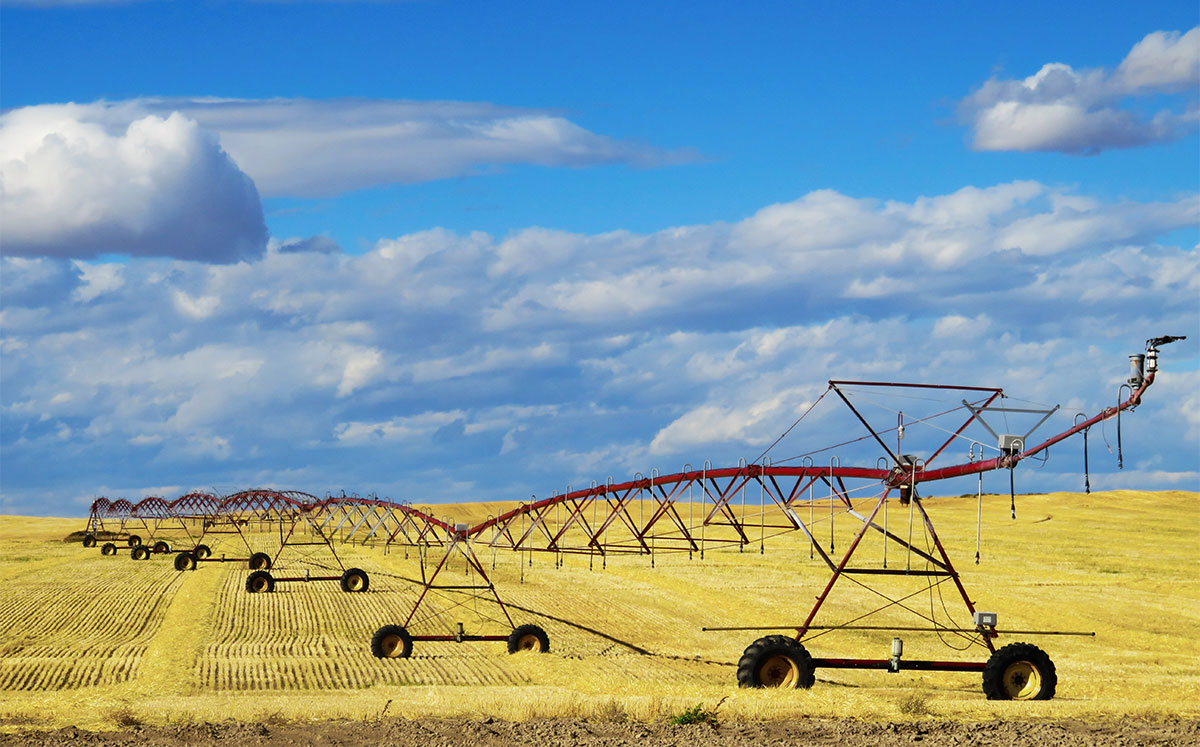The future of food security is at risk from farmers using groundwater faster than it can be replenished, finds Bartlett researcher Dr Carole Dalin.

Some 40% of all irrigation for global agriculture now comes from underground aquifers. Credit: Peter Gonzalez for Unsplash
Farmers have always used groundwater as a fall-back option when surface water runs dry, so what’s the problem? Well, unlike rivers, aquifers form over hundreds of years, and with climate change increasing the risk of drought in many parts of the world and global demand for ‘thirsty crops’ like wheat, rice, maize and soya soaring, farmers are starting to have to depend on groundwater supplies. Some 40% of all irrigation now comes from underground aquifers.
These findings are from a groundbreaking study led by Carole Dalin, Senior Research Fellow at The Bartlett’s Institute for Sustainable Resources. Published in Nature in March 2017, Groundwater Depletion Embedded in International Food Trade, proved to be so eye-opening that it is among the top 4% of Nature’s most-read articles.
“We have been using groundwater as if it is renewable, while often it is not,” says Dalin. “Aquifers should be kept in reserve so that food supplies do not suddenly stop when there is a drought.”
70% Pakistan
57% USA
100% India
Increase in exports of groundwater-depleting crops from the three largest exporters between 2000 and 2010.
A virtual water trade
By analysing land use, food trade data and the best estimates of groundwater depletion worldwide, Dalin’s team were able to calculate how much groundwater is used to grow food crops (grouped into 26 categories) in each country and then to track those crops (and the commodities they are made into) from their country of origin to where they are consumed.
Food supply chains are long and complex, so even if one country doesn’t deplete its own groundwater, it may import its food from one that does. The team found that “a vast majority of the world’s population lives in countries sourcing nearly all their staple crop imports from partners who deplete groundwater to produce those crops”.
Pakistan, the USA and India together account for two-thirds of all the crops other countries import that depend on this unsustainable water source. And that dependence has been growing fast. Between 2000 and 2010, exports of groundwater-depleting crops from the three largest exporters increased by 70%, 57% and 100% respectively.
“Countries are importing water indirectly via food,” says Dalin, who calls this a ‘virtual water trade’. “We now know the groundwater depletion associated with each crop.”
Raising the alarm
The work was a truly international collaborative effort: Yoshihide Wada, Deputy Director of the Water Programme at the International Institute for Applied Systems Analysis in Austria, created the hydrological model the team used to estimate water use for individual crops; Thomas Kastner, Senior Scientist at the Senckenberg Biodiversity and Climate Research Centre in Germany, helped refine the trade calculations using an algorithm he has developed to trace imported food back to its origin; and Michael J. Puma, a food security expert at NASA’s Goddard Institute for Space Studies helped analyse United Nations Food and Agriculture Organization data on crop production and trade in agricultural commodities.
The findings from the hydrological model were validated against those of NASA’s Gravity Recovery and Climate Experience project, which calculates groundwater depletion by measuring gravity levels on the sub-surface of the earth, which vary depending on how much water is under the surface.
Currently, international institutions do not have comprehensive plans in place to address this situation. And if groundwater resources are exhausted in major food-producing regions, the likelihood is that agricultural production would decline causing a sharp rise in food prices.
Dalin hopes the research will help countries become aware of how insecure their sources of food are and inspire policy-makers, consumers and farmers to seek more sustainable options. “There is no easy solution though,” she admits. “You could say you’re going to tax groundwater use, but then food prices would go up.”
Dalin recently published new research on the subject with Marta Tuninetti, Post-doctoral Researcher, and Stefania Tamea, Associate Professor, both from the Politecnico di Torino in Turin, Italy. Published in February 2019, ‘The Water Debt indicator’ reveals where agricultural water use exceeds sustainable levels – and how long it takes for the hydrological cycle to renew the water that’s used for crop production. It’s another valuable tool in shedding light on the weaknesses in the global food system, and highlighting where agricultural policy and water resources management should be improved to ensure future food security.
 Close
Close




